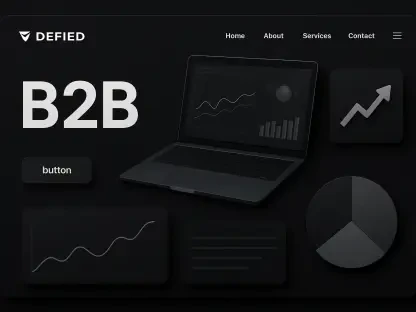Overview of Email Marketing’s Vital Role
In the ever-evolving digital landscape of 2025, email marketing stands as a cornerstone for businesses aiming to connect with their audiences. With a staggering 87% of marketers recognizing email as a critical component of their success, this channel remains a powerful tool for driving customer interaction and loyalty. Particularly for small businesses, where 64% rely on email to reach their target markets, the accessibility and cost-effectiveness of this medium are unmatched.
The true measure of email marketing’s impact lies in audience engagement—a key indicator of whether messages resonate or fall flat. Engagement goes beyond mere delivery; it reflects how subscribers interact through opens, clicks, and conversions. This metric is essential for understanding campaign effectiveness and ensuring that communications are not just sent, but felt and acted upon.
High engagement translates directly to business growth by fostering stronger connections with existing customers and attracting potential ones. It signals that content is relevant, timing is appropriate, and trust is established. As competition in digital spaces intensifies, prioritizing engagement becomes not just a strategy, but a necessity for sustained success.
Key Metrics to Measure Email Engagement
Essential Engagement Metrics
To evaluate email campaign performance, marketers must track several core metrics that paint a clear picture of subscriber interaction. Delivery rate, the percentage of emails reaching inboxes, should ideally be at or above 95%. This can be calculated as: Delivery Rate = (Number of Emails Delivered / Total Number of Sent Emails) x 100. A high rate ensures messages aren’t lost to spam filters or bounced addresses.
Open rate, targeting a range of 20-40%, measures the percentage of recipients who open an email, calculated by: Open Rate = (Number of Opened Emails / Total Number of Recipients) x 100. Click-through rate (CTR), aiming for around 2%, tracks link clicks with: CTR = (Number of Recipients Who Clicked / Total Number of Emails Delivered) x 100. Conversion rate, ideally above 2.5%, assesses action completion viConversion Rate = (Number of People Who Performed Action / Total Number of Emails Delivered) x 100. Finally, unsubscribe rate, best kept below 0.2%, gauges disengagement using: Unsubscribe Rate = (Number of Recipients Who Unsubscribed / Total Number of Emails Delivered) x 100.
These benchmarks provide a framework for assessing whether campaigns meet industry standards. Each metric offers a unique lens into audience behavior, helping to pinpoint areas for improvement. Regularly monitoring these figures ensures that strategies remain aligned with subscriber expectations and business goals.
Interpreting Metrics for Actionable Insights
Beyond mere numbers, these metrics reveal deep insights into how audiences perceive and interact with email content. A high open rate might indicate compelling subject lines, while a low CTR could suggest that the email’s call-to-action lacks appeal or clarity. Understanding these nuances allows marketers to refine their approach based on real user responses.
Analyzing trends over time further enhances strategic decision-making by highlighting consistent strengths or recurring weaknesses. For instance, a gradual decline in conversion rates might point to outdated offers or shifting customer preferences. Such patterns equip businesses with the foresight to adapt before issues escalate.
Consistent tracking also enables predictive analysis, helping anticipate future engagement behaviors. By identifying correlations between specific campaign elements and metric outcomes, marketers can proactively adjust content or timing. This forward-looking approach transforms raw data into a roadmap for sustained improvement and relevance.
Challenges in Achieving High Email Engagement
Email marketing, despite its potential, often faces hurdles that can dampen engagement. Low open rates frequently stem from unappealing subject lines or poor sender reputation, while high unsubscribe rates signal content irrelevance or excessive frequency. Emails landing in spam folders further compound the issue, often due to inadequate domain authentication or questionable practices.
Additional challenges include maintaining list hygiene and ensuring content resonates with diverse audiences. Outdated or purchased lists lead to high bounce rates and spam complaints, while generic messaging fails to capture individual interest. Timing missteps, such as sending emails during off-hours, can also result in missed opportunities for connection.
Initial steps to address these obstacles involve rigorous list cleaning to remove inactive or invalid contacts and optimizing content for relevance. Adjusting send frequency based on subscriber feedback and testing different delivery schedules can mitigate fatigue. These foundational efforts lay the groundwork for more robust engagement strategies.
Best Practices for Email Content and Compliance
Creating impactful email content requires a balance of creativity and adherence to regulatory standards. Compelling messages that address subscriber needs or interests drive interaction, but they must also comply with laws like CAN-SPAM. This means avoiding deceptive tactics, providing clear opt-out mechanisms, and respecting user preferences to build trust.
Domain authentication plays a pivotal role in ensuring emails reach inboxes rather than spam folders. Implementing protocols like SPF, DKIM, and DMARC enhances deliverability while signaling legitimacy to email providers. Coupled with meticulous list management, these practices safeguard sender reputation and maintain audience confidence.
Compliance and content quality are not mutually exclusive; rather, they reinforce each other. Transparent communication about data usage and subscription terms fosters goodwill, while relevant, value-driven content keeps subscribers engaged. This dual focus ensures campaigns are both effective and ethically sound.
Strategies to Boost Email Engagement Rates
Enhancing engagement begins with crafting subject lines that capture attention, ideally under 50 characters to ensure visibility on mobile devices. Incorporating emojis, where appropriate, can add a visual hook—studies show 73% of marketers note improved performance with such elements. The body content must then deliver on the promise of the subject line with clear, actionable messaging.
Maintaining a healthy email list is equally critical, achieved through organic growth and regular pruning of unengaged subscribers. Encouraging sign-ups from interested parties ensures a receptive audience, while periodic cleanups reduce spam risks. This curated approach keeps engagement metrics strong and deliverability high.
Personalization and segmentation further elevate impact by tailoring content to specific groups based on demographics or behavior. Reengagement campaigns targeting inactive subscribers with special offers or surveys can reignite interest. Additionally, A/B testing for optimal send times and frequencies prevents over-saturation, striking a balance that keeps subscribers attentive without overwhelming them.
Future Trends and Innovations in Email Marketing
The email marketing landscape continues to evolve with interactive content emerging as a game-changer. Features like carousels, embedded videos, polls, and quizzes transform static messages into dynamic experiences, capturing subscriber interest in novel ways. These innovations are redefining how brands connect in crowded inboxes.
Automation and artificial intelligence are also reshaping strategies by enabling hyper-personalized content and precise timing. AI-driven tools analyze vast datasets to predict optimal send windows and customize messaging, enhancing relevance. Such technologies streamline operations while amplifying engagement potential.
However, evolving consumer behaviors and stricter privacy regulations pose challenges to traditional approaches. Adapting to these shifts requires leveraging cutting-edge tools and platforms that prioritize data security and user consent. Staying ahead of these trends ensures that email marketing remains a potent, adaptable tool for audience connection over the coming years, such as from 2025 to 2027.
Reflecting on Engagement’s Impact
Looking back, the exploration of email engagement metrics and strategies underscores their pivotal role in digital marketing success. The detailed analysis of delivery rates, open rates, and other indicators provided a clear framework for assessing campaign health. Challenges like spam filters and content relevance were met with practical solutions that paved the way for improvement.
Reflecting on the journey, the adoption of personalization, segmentation, and interactive content stood out as transformative steps. These efforts, combined with compliance with regulations like CAN-SPAM, built a foundation of trust and effectiveness. The integration of automation and AI further highlighted how technology amplifies human creativity in this space.
Moving forward, the focus shifts to actionable next steps like continuous metric monitoring and embracing emerging tools to stay competitive. Businesses are encouraged to experiment with innovative formats and adapt to privacy-driven changes. This proactive stance promises to keep email marketing a dynamic, results-oriented channel for years to come.









